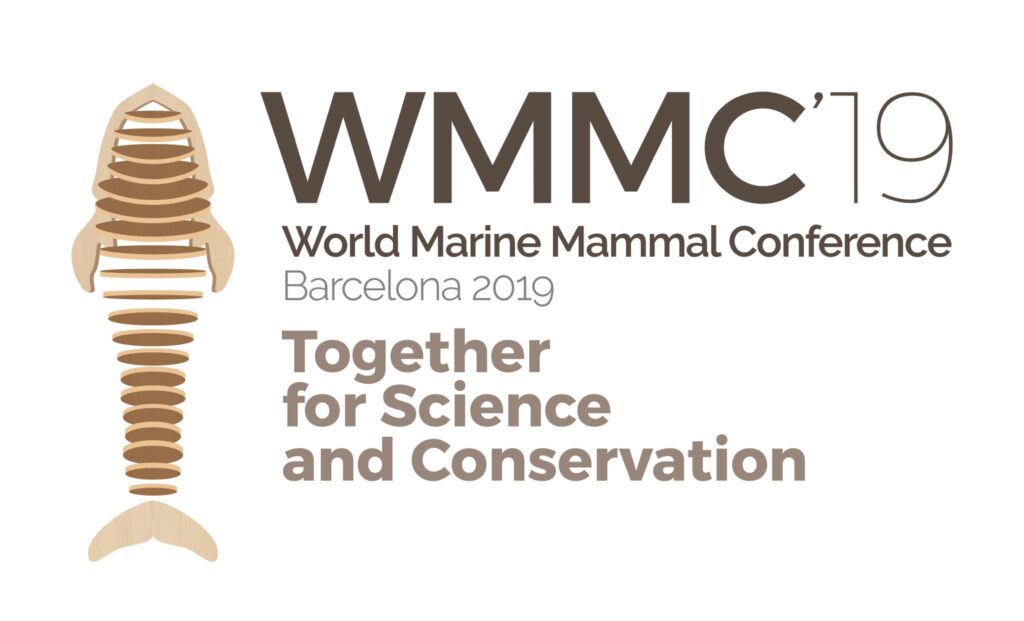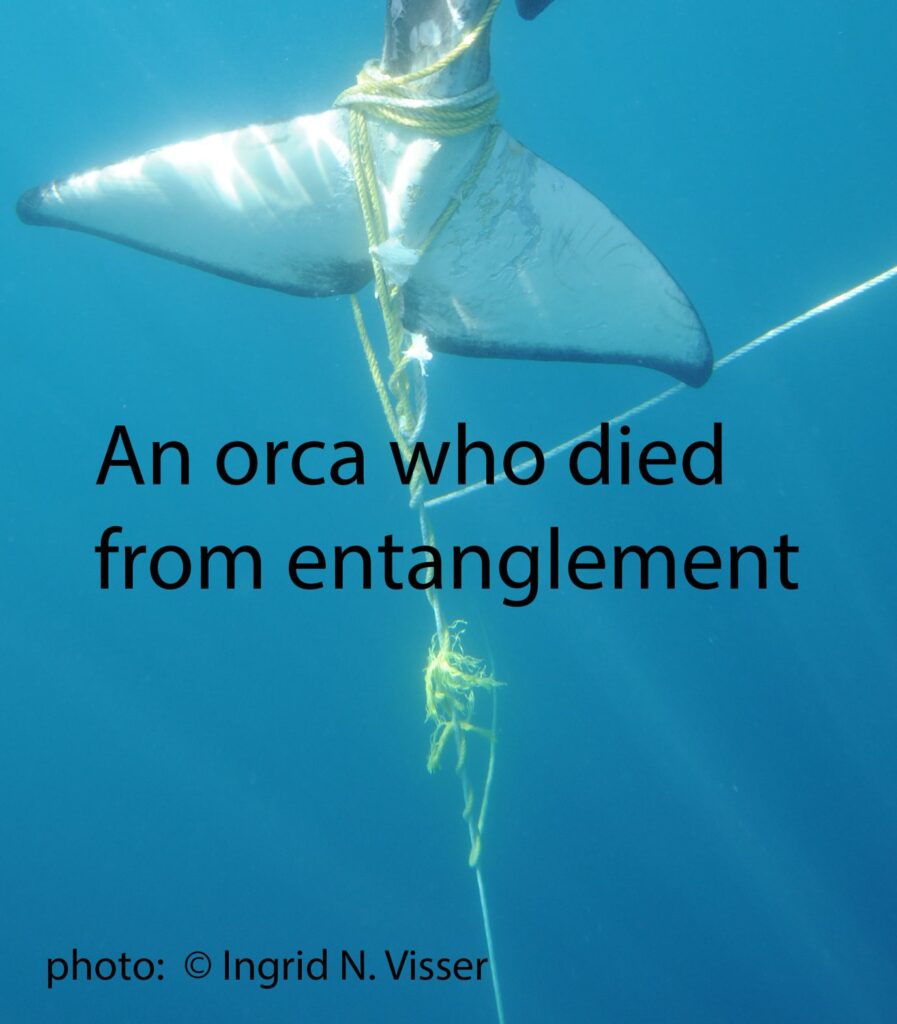Orca Entanglements
At the World Marine Mammal Conference (9-12 December 2019, Barcelona, Spain), Dr. Ingrid Visser, together with Dr. Krista Hupman presented a poster about orca entanglements.
New Zealand has a high rate of orca entanglements and sadly this often results in their death. If you find an orca that is entangled,
IMMEDIATELY CALL 0800 SEE ORCA (0800 733 6722).
Remember, in NZ it is against the law to approach an orca closer than 50m. Do not attempt to disentangle the orca – even small bits of rope left embedded in their skin can cause a slow and painful death.
If you encounter an orca outside of NZ waters and it is legal to do so, you may consider SLOWLY AND CAREFULLY approaching from the side or behind and hook the rope from below the animal. Secure the rope to your vessel to take the pressure off the orca and allowing it to breathe. At that point it likely will require disentangling, but it would be best to consult with experts on the phone as each situation is unique and proper methods must be used to free the orca to ensure that it is not injured in the process and you or your boat is not damaged. Remember – Safety First – for you and them! Thank you.
The Abstract (summary) for the poster is:
The New Zealand coastal population of orca (killer whales, Orcinus orca) is classified under the Department of Conservation (DOC) Threat Classification System as ‘Nationally Critical’, the highest category possible. This classification is based on, inter alia, their low population number (fewer than 200 individuals) and the wide range of threats they face including critical habitat destruction, pollution bioaccumulation, boat strikes, strandings and fisheries interactions which include shootings as well as entanglements. The latter is of particular significance due to the high number of events with least 21 orca (of both sexes and all age-classes including adults, juveniles and calves) becoming entangled since 1979. Entanglements have occurred in commercial fisheries gear, including gill and trawl nets, long-lines and cray-pot lines, as well as likely entanglements with private fishing gear from pots, rods and/or handlines. The outcome of these entanglements included seven confirmed deaths, another nine whose fate remains unknown (due to poor documentation) and only five who were actively disentangled and released. The DOC, although legally mandated to protect New Zealand marine mammals, did not participate in any disentanglements and instead the public and volunteer entanglement response networks responded and released them. Only one orca was photo-identified during the disentanglement process and she has been resighted on numerous occasions over the five year period since her release. To minimise entanglements of orca, easily-applied mitigation options are presented and these methods may also help reduce entanglements of other cetaceans around New Zealand. In addition to implementing mitigation options it is vital that the DOC work with the volunteer entanglement response networks to improve disentanglement rates for this Nationally Critical population to ensure its viability.


